We all have those moments when you just wanna splash some classic Ponzu sauce on sushi, and there’s none around. Times like this call for other Asian sauces to act as substitutes for ponzu sauce. The best substitute for ponzu sauce is soy sauce, but you can use homemade Ponzu Sauce, Soy Sauce + Lemon, Soy Sauce + Vinegar, and Tamari + Citrus Fruit. But this isn’t all! So, let’s hop into every ponzu sauce substitute for you to use.
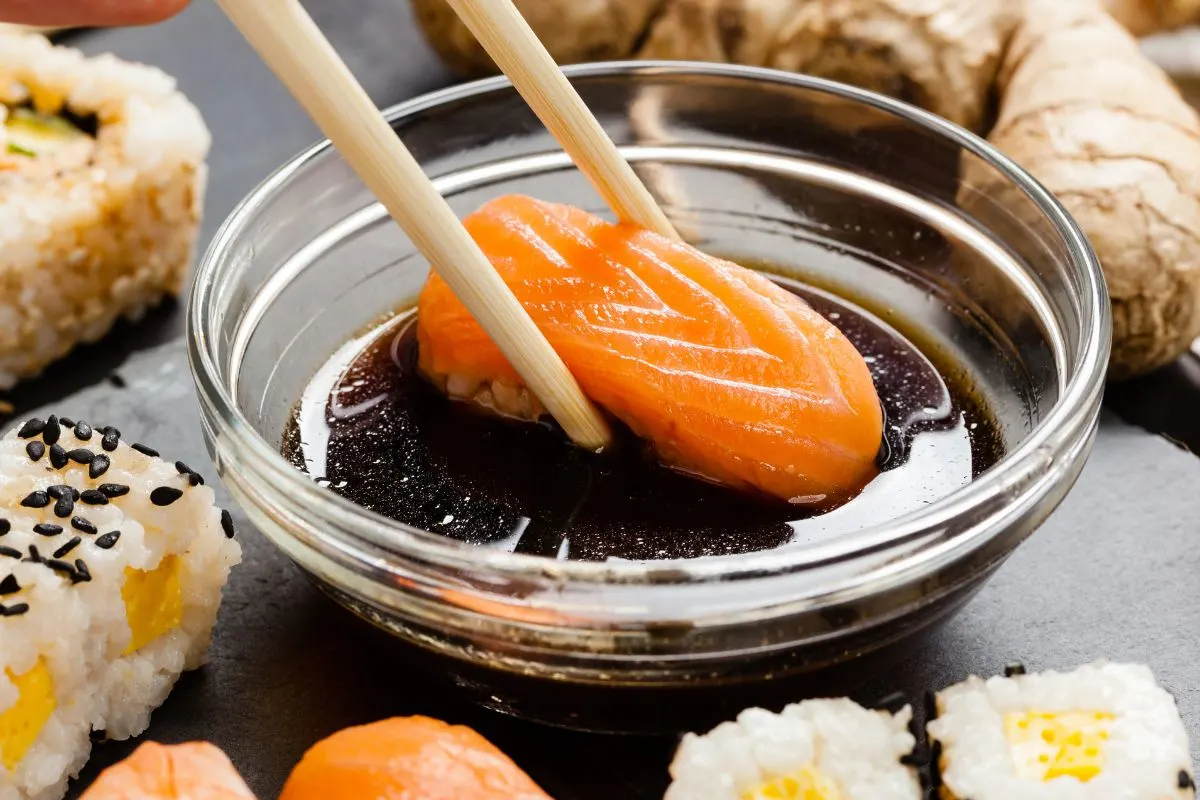
Jump To
What is Ponzu Sauce?
Ponzu sauce is a citrus-based sauce that combines soy sauce, rice vinegar, citrus juice, and mirin. The sauce is known for its unique balance of flavors, which include umami, tartness, and sweetness. It’s a popular Japanese condiment often used as a dipping sauce for sushi, sashimi, and other dishes.
How to Make Ponzu Sauce
To make Ponzu sauce, start by whisking together soy sauce, citrus juice, and mirin in a bowl. You can use any type of citrus juice, but yuzu juice is traditional. If you can’t find yuzu juice, you can use a combination of lemon and lime juice.
You can also add other ingredients to your Ponzu sauce, such as rice vinegar, sugar, and grated ginger. Once you have combined the ingredients, let the mixture sit for a few minutes to allow the flavors to meld together.
What is Ponzu Sauce Made of?
Ponzu sauce typically consists of soy sauce, citrus juice (such as yuzu or sudachi), rice vinegar, mirin (sweet rice wine), and dashi (a Japanese stock). The combination of soy sauce and ponzu and the other ingredients creates a versatile and tangy sauce with a perfect balance of sweet, salty, and citrusy flavors.
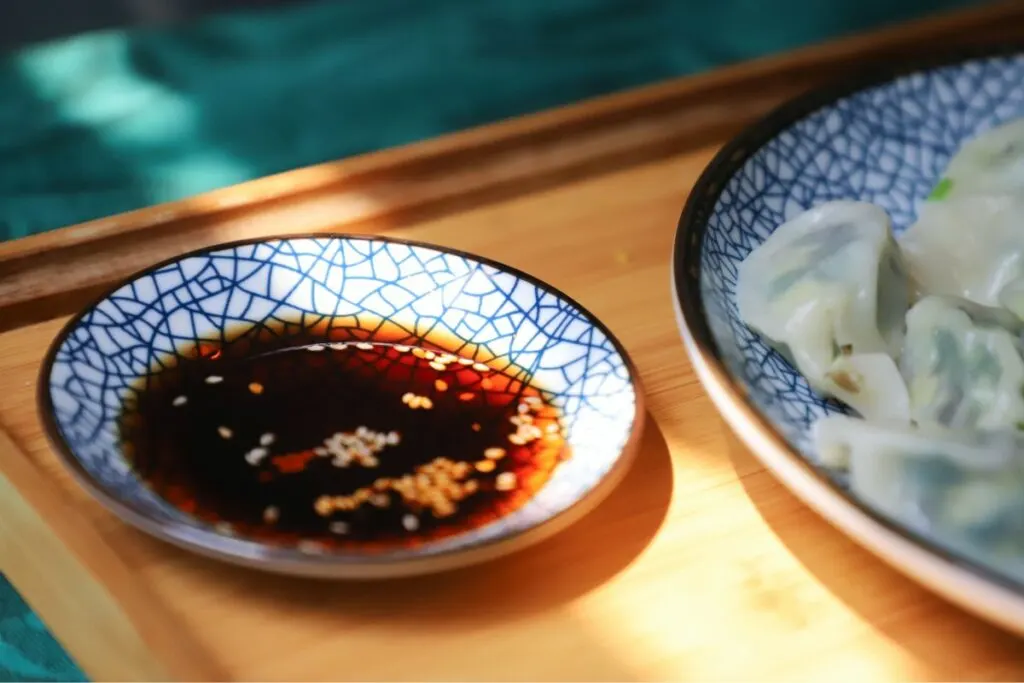
What is Ponzu Sauce Used For?
- Dipping Sauce: Serve ponzu sauce as a dipping sauce for sushi, sashimi, dumplings, spring rolls, or tempura. Its tangy and savory profile complements the flavors of these dishes.
- Marinade: Use ponzu sauce as a marinade for meats, poultry, seafood, or tofu. The acidity from the citrus helps tenderize the proteins while infusing them with a delicious blend of flavors. Marinate for at least 30 minutes before cooking.
- Salad Dressing: Mix ponzu sauce with a bit of oil (such as sesame or olive oil) to create a refreshing and flavorful salad dressing. Drizzle it over mixed greens, seaweed salad, or cucumber salads for a Japanese-inspired twist.
- Stir-Fry Sauce: Add ponzu sauce to stir-fried dishes to impart a savory and citrusy kick. It works well with vegetables, tofu, chicken, beef, or shrimp. Add it towards the end of cooking to prevent the flavors from dissipating.
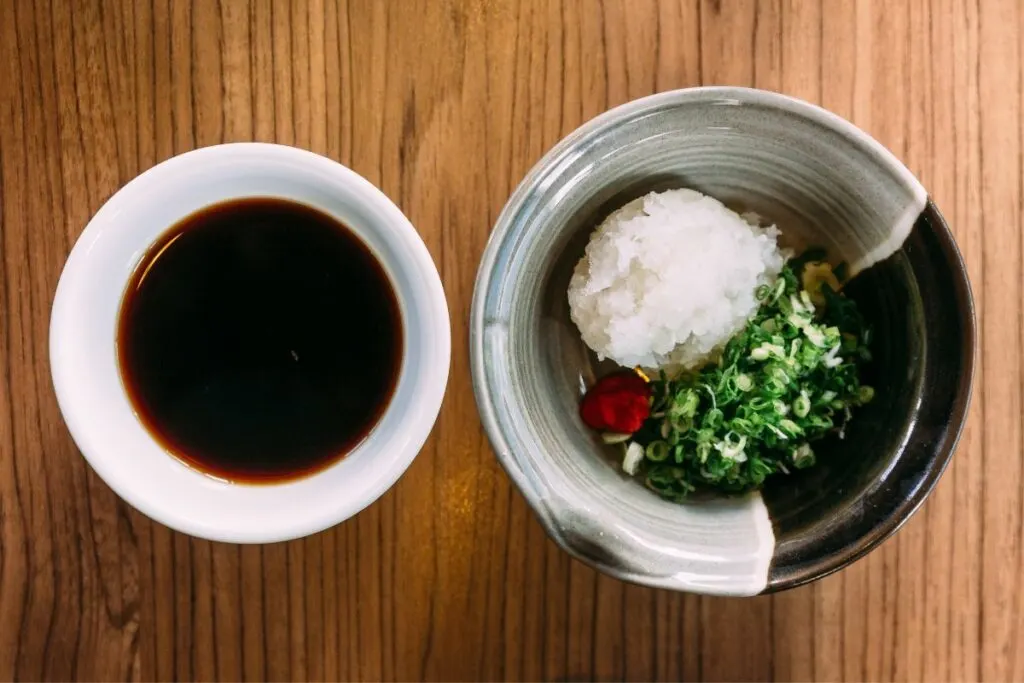
7 Best Ponzu Sauce Substitutes
We’re confident you won’t be able to wait for a restock before experimenting with it. So here are some terrific ponzu substitutes to try if you don’t currently have the condiment on hand.
Soy Sauce + Lemon (or Lime, Orange, Grapefruit)
With this simple hack, get ready to savor the unique flavor of ponzu in your food. Since soy sauce and lemon are two essential components of ponzu sauce, you can make it with these two ingredients as the base. Combine 2 Tbsp. of soy sauce with ½ Tbsp. of lemon juice (or lime, orange, or grapefruit juice). To taste, add additional citrus in ½ tsp. increments.
You may use practically any tart citrus fruit you have on hand to make this replacement. Just thoroughly whisk the mixture without heating it, and be careful not to squeeze too hard if your chosen citrus is bitter.
Soy Sauce + Vinegar
Suppose you don’t have lemons or limes but have a type of vinegar. As an alternative to ponzu sauce, use soy sauce and vinegar. Whisk the two ingredients together starting with 2 Tbsp. of soy sauce and ½ Tbsp. of vinegar. Raise the acidity by adding more vinegar in increments of ½ tsp.
Note that this mixture lacks a zesty aroma. If you think it’s missing the scent, feel free to add a dash of lemon or lime juice or whatever you have on hand, even citrus zest.
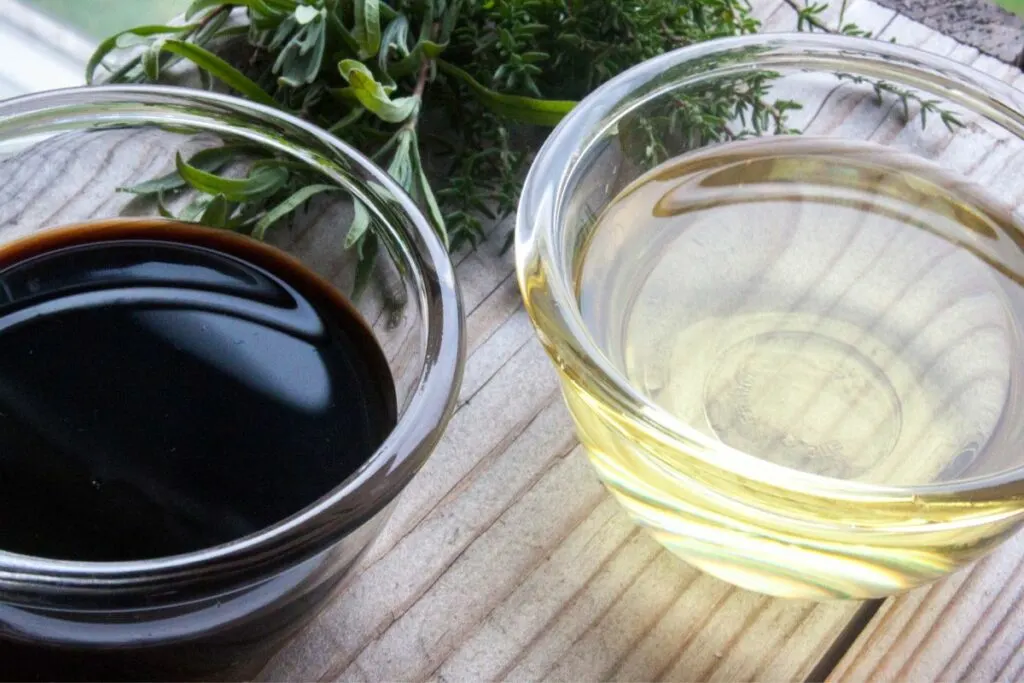
Homemade Ponzu Sauce
The list of ingredients for this straightforward ponzu hack can almost certainly be found in your pantry. Just add equal portions of a soy sauce like sweet soy sauce and fresh lemon juice to create a “quick” version of ponzu at home. But since we’re already creating it, why not add a few other traditional ingredients to boost the flavor even more? Add a dash of mirin for sweetness, a strip of kombu for a deeper flavor, and a few katsuobushi (bonito flakes) for more smokey, umami flavor.
If you want to take it up a notch, try adding red chili flakes to spice up your dish. The earthiness and brightness of the ponzu sauce will be complemented by the chili pepper, no matter how much or how little. Homemade ponzu stores well in the fridge; it can last for a few months in a sterilized, air-tight container.
Tamari + Citrus Fruit
If you’re concerned about the sodium content in soy sauce or are on a restricted diet, don’t miss out on the exciting flavors offered by this condiment. Tamari bears a similar taste to soy sauce albeit milder in flavor, thicker and richer in consistency. This gluten-free alternative to soy sauce is a terrific ponzu sauce equivalent when paired with a tart citrus fruit. It’s a key ingredient in any homemade gluten-free ponzu sauce.
Simply incorporate 2 Tbsp. tamari with ½ Tbsp. citrus fruit and then adjust accordingly. The bright, tangy, savory flavors of this combination offer more nuanced flavors than other alternatives. Looking for a more healthful choice? Try wheat-free, soy-free, and sugar-free coconut aminos in place of soy sauce. Give it a try in your dishes.
Hoisin + Rice Vinegar + Soy Sauce
A popular marinade or dipping sauce in Cantonese cooking, hoisin offers itself as a great alternative to ponzu sauce. It is sweet and packed with umami goodness, so hoisin, rice vinegar, and soy sauce can be combined to create a marinade or dipping sauce that tastes similar to ponzu sauce.
The mixture develops a complex flavor profile resembling ponzu sauce when used on meats, seafood, and vegetables. Just thin out the sauce with a little water if it’s too thick.
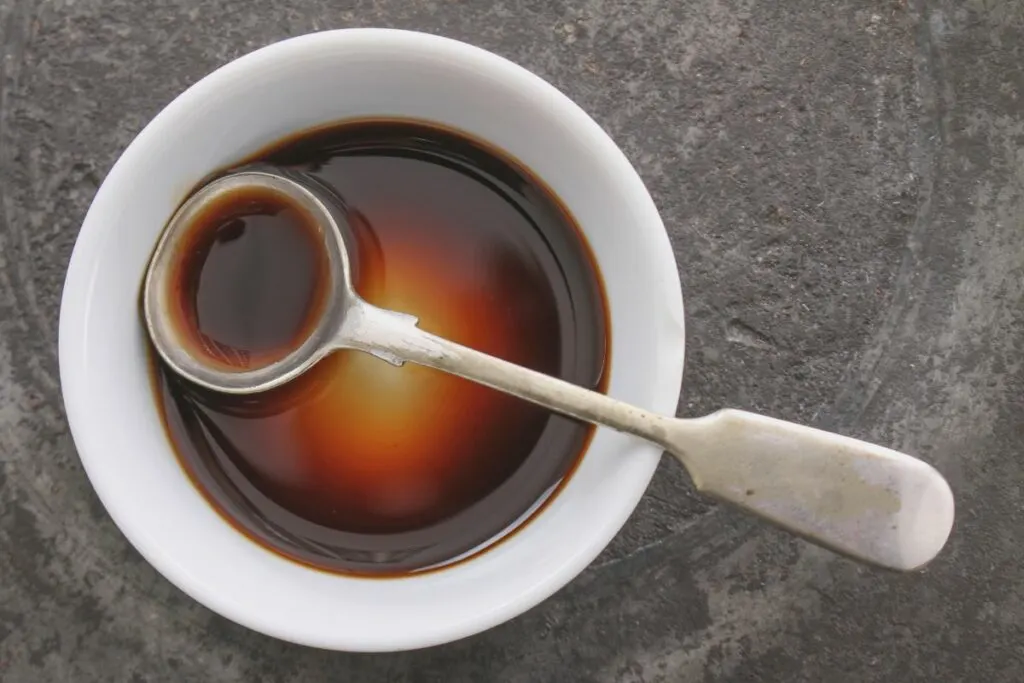
Worcestershire
Worcestershire sauce is a fermented British condiment used in many different dishes. It is very similar to ponzu sauce insofar as how it’s used in dishes. Its tart flavors come from vinegar and tamarind, saltiness from anchovies, and sweetness from molasses while the umami comes from spices like onions and garlic.
Best to use 1 Tbsp. of it as a substitute for 1 Tbsp. of ponzu sauce marinade.
Tonkatsu Sauce
If you’re a fan of Japanese dishes, you’ve probably bought too many Japanese condiments that are eating up premium shelf space in the fridge. Grab that sweet and tangy bottle of tonkatsu sauce to replace ponzu sauce in your cooking; use it in a 1:1 ratio.
Tonkatsu is crafted from vegetables, fruits, vinegar, sugar, salt, and spices. It’s an incredibly easy ponzu sauce substitute and has a distinctive tangy-salty taste that lends itself well to meat and seafood marinades.
FAQs
What does Ponzu Sauce taste like?
It’s a combination of a sour taste, tangy flavor, and sweetness with a hint of saltiness and citrus flavoring. The sauce’s well-balanced taste makes it the perfect accompaniment to many dishes.
What are some healthy alternatives to Ponzu sauce?
You can use lemon juice or lime juice mixed with soy sauce. You can also use balsamic vinegar or apple cider vinegar mixed with soy sauce.
Can I make an easy Ponzu sauce without mirin?
Yes, you can make an easy Ponzu sauce without mirin by using rice vinegar or white wine vinegar instead.
